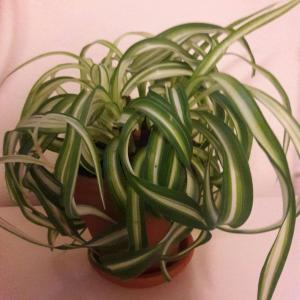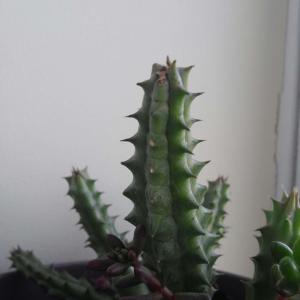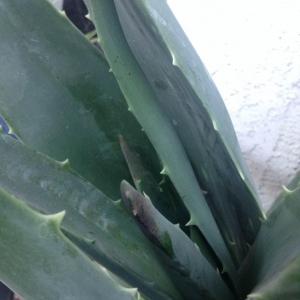文章
Dummer. ゛☀
2017年09月13日

Although an infestation of armyworm caterpillars can rapidly decimate a commercial field crop, they rarely cause this degree of destruction in home gardens. Armyworms feed at night on plant foliage and grass blades; they hide under foliage and debris during the day. Severe feeding can result in dead areas of lawn and ragged-looking or defoliated crops.

Young armyworms are pale green; older larvae are brownish with stripes along their bodies. Several species attack a variety of garden crops, including corn, beets, tomatoes, peppers, potatoes, onions, and peas. Adults are gray-brown moths that migrate northward in the spring to lay eggs on host plants and in lawns. There can be several generations each year; each generation emerging farther north. Late-season generations will also feed on fruit.

In general, armyworms do not survive cold winters, but they can be a year-round pest in warm-winter climates, such as California and Florida. Beet armyworms are a problem in southern states and in the West, where they can be found as far north as Montana.

Prevention and Control
Encourage native beneficial insects such as parasitic wasps that prey on caterpillars.
Weed out grassy weeds as well as pigweed, plantain, and lamb’s quarters, which are host plants for the beet armyworm.

Young armyworms are pale green; older larvae are brownish with stripes along their bodies. Several species attack a variety of garden crops, including corn, beets, tomatoes, peppers, potatoes, onions, and peas. Adults are gray-brown moths that migrate northward in the spring to lay eggs on host plants and in lawns. There can be several generations each year; each generation emerging farther north. Late-season generations will also feed on fruit.

In general, armyworms do not survive cold winters, but they can be a year-round pest in warm-winter climates, such as California and Florida. Beet armyworms are a problem in southern states and in the West, where they can be found as far north as Montana.

Prevention and Control
Encourage native beneficial insects such as parasitic wasps that prey on caterpillars.
Weed out grassy weeds as well as pigweed, plantain, and lamb’s quarters, which are host plants for the beet armyworm.
0
0
文章
Dummer. ゛☀
2017年09月13日

A powdery white growth on leaves is the first evidence of this fungal disease, which affects beans, cucumbers, squash, pumpkins, lettuce, peas and many other kinds of plants. The fungus can spread to flowers and fruit. New growth and succulent plant tissues are particularly vulnerable to infection. Infected areas eventually turn yellow and dry up; severe infection can weaken or even kill entire plants.

Unlike other fungal diseases, powdery mildew does not require wet foliage for infection to occur, although it does require high humidity. It can spread quickly in warm, dry climates. The fungus overwinters on plant debris.

Prevention and Control
Plant powdery mildew-resistant varieties, such as Super Sugar Snap pea.
Water plants as needed to prevent moisture stress.
Keep plants well spaced and weeded to optimize air flow around the leaves.
Avoid excess nitrogen fertilizer, especially late in the growing season.
Unlike other fungal diseases, powdery mildew does not require wet foliage for infection to occur, although it does require high humidity. It can spread quickly in warm, dry climates. The fungus overwinters on plant debris.

Prevention and Control
Plant powdery mildew-resistant varieties, such as Super Sugar Snap pea.
Water plants as needed to prevent moisture stress.
Keep plants well spaced and weeded to optimize air flow around the leaves.
Avoid excess nitrogen fertilizer, especially late in the growing season.
0
0
文章
Dummer. ゛☀
2017年09月13日

This common fungal disease of tomatoes and potatoes first appears as dark brown spots on leaves. On close examination, the spots show a pattern of concentric brown rings. Spots may enlarge and merge, and the leaves will turn yellow and die. Infected plants slowly lose leaves from the bottom up as the disease progresses. Tomato plant stems may also be infected, and eventually tomato fruit will display leathery black lesions. If the disease progresses relatively slowly, gardeners can usually expect to harvest usable fruit, but the quality and yield will be reduced. When potatoes suffer from early blight, their leaves display similar black spots and the tubers become covered with brown, corky spots.

The early blight fungus overwinters in plant residues in the soil; the disease spreads rapidly in warm, humid conditions.

Prevention and Control
Grow blight-tolerant tomato varieties and purchase disease-free seeds and plants.
If space allows, rotate susceptible crops.
Destroy any volunteer potato or tomato plants that sprout in your garden, as they may already be infected.
Keep foliage as dry as possible. Use drip irrigation or soaker hoses rather than overhead watering.
Keep tomato plants staked to encourage good air circulation and minimize contact between plants and soil.
Mulch tomato plants early in the season to slow the disease spread.
Pick off and destroy infected leaves. If the disease continues to spread, uproot and destroy or deeply bury the diseased plants.
After harvest, remove all potentially infected plant debris from the garden and destroy it. Compost the material only if you maintain a “hot” compost pile that will reach 150 degrees F for several days.

The early blight fungus overwinters in plant residues in the soil; the disease spreads rapidly in warm, humid conditions.

Prevention and Control
Grow blight-tolerant tomato varieties and purchase disease-free seeds and plants.
If space allows, rotate susceptible crops.
Destroy any volunteer potato or tomato plants that sprout in your garden, as they may already be infected.
Keep foliage as dry as possible. Use drip irrigation or soaker hoses rather than overhead watering.
Keep tomato plants staked to encourage good air circulation and minimize contact between plants and soil.
Mulch tomato plants early in the season to slow the disease spread.
Pick off and destroy infected leaves. If the disease continues to spread, uproot and destroy or deeply bury the diseased plants.
After harvest, remove all potentially infected plant debris from the garden and destroy it. Compost the material only if you maintain a “hot” compost pile that will reach 150 degrees F for several days.
0
0
成长记
KittySucculent
2017年09月11日

I took a cutting from my mother in law's plant on a 4 hour plane ride. I had no idea if it would even live.


1
0
成长记
KayleeShedd
2017年09月10日

Grace's daughter is actually growing to be a whole new plant! Once she gets too big for this starter planter, I'll put her in a pot next to her mama!
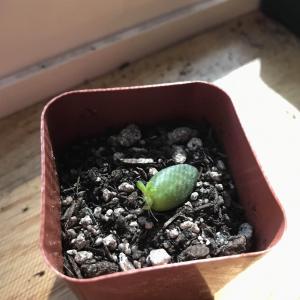

3
0
成长记
KayleeShedd
2017年09月10日

Dannys son is growing some roots! In a few weeks im sure he'll be able to be planted and grow into a big plant!
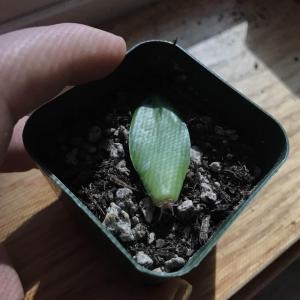

1
0
成长记
meriunkat
2017年09月10日

I new added a "Bryophyllum Delagonse Kalanchoe "Chandelier plant"" in my "garden"


1
0
meriunkat:@FrancinieCR thanks 😆
FrancinieCR:Beautiful!
成长记
HappyGrowing
2017年09月09日

I new added a "Graptopetulma paraguayense "Ghost plant"" in my "garden"
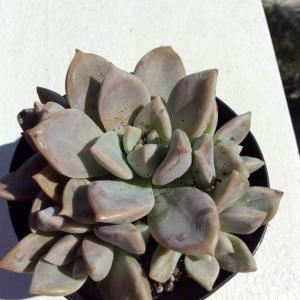

2
0
Mohammed Othman AlDabadab
2017年09月09日

Anyone Know it Please
Good Day All
This plant look like Mushrooms
But i don't know what its
Anyone can help Please
Hope it's Not Poison One







Good Day All
This plant look like Mushrooms
But i don't know what its
Anyone can help Please
Hope it's Not Poison One







0
0
求助
BucketsOfSucculents 🌵
2017年09月08日

What in the world kind of bug is this? It came off my water melon plant!?....
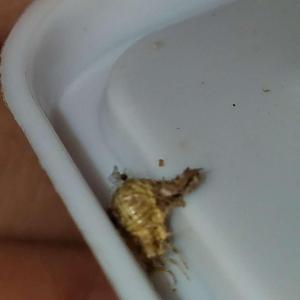

0
0
meriunkat:oh jeez.. it kinda looks like a snail then some kind of amphid lol that's crazy..



